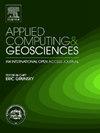基于深度学习的地质不连续面高级识别
IF 3.2
Q2 COMPUTER SCIENCE, INTERDISCIPLINARY APPLICATIONS
引用次数: 0
摘要
岩体表征在地球科学的各种应用中是必不可少的。传统的方法,如手工映射和解释,是劳动密集型的,并且容易产生不一致。尽管机器学习在许多领域都取得了进展,但它在构造地质学中的应用,特别是在区分不同的不连续类型方面的应用仍然有限。本研究提出了一种基于深度学习的方法,用于识别钻孔图像中的地质不连续性,对完整壁、诱导裂缝和构造断裂面等特征进行分类。我们评估了深度学习架构,包括标准卷积神经网络和基于transformer的模型,并通过多尺度训练、平铺策略和定制损失函数优化分割性能。我们的研究结果表明,Transformer模型,特别是SegFormer,在检测复杂地质特征方面优于U-Net。加权交叉熵和焦点损失的结合使用进一步提高了模型的鲁棒性,特别是对于代表性不足和具有挑战性的特征。此外,瓦片尺寸的选择显著影响不同地质特征的分类性能。本研究建立了一条高效、准确的自动化地质解释管道,对地下勘探和岩土工程具有重要意义。本文章由计算机程序翻译,如有差异,请以英文原文为准。
Advanced identification of geological discontinuities with deep learning
Rock mass characterization is essential for various applications in geosciences. Traditional methods, such as manual mapping and interpretation, are labor-intensive and prone to inconsistencies. Although machine learning has advanced in many fields, its application in structural geology, especially for distinguishing different discontinuity types, remains limited. This study presents a deep learning-based approach for identifying geological discontinuities in borehole images, classifying features such as intact walls, induced cracks, and tectonic fault planes, among others. We evaluate deep learning architectures, including standard Convolutional Neural Networks and Transformer-based models, and optimize segmentation performance with multi-scale training, tiling strategies, and tailored loss functions. Our results demonstrate that the Transformer model, particularly SegFormer, outperforms U-Net in detecting complex geological features. The combined use of weighted cross-entropy and focal loss further improves model robustness, especially for underrepresented and challenging features. In addition, the choice of the tiling size significantly affects the classification performance of different geological features. This research establishes an efficient and accurate pipeline for automated geological interpretation, with significant implications for subsurface exploration and geotechnical engineering.
求助全文
通过发布文献求助,成功后即可免费获取论文全文。
去求助
来源期刊

Applied Computing and Geosciences
Computer Science-General Computer Science
CiteScore
5.50
自引率
0.00%
发文量
23
审稿时长
5 weeks
 求助内容:
求助内容: 应助结果提醒方式:
应助结果提醒方式:


